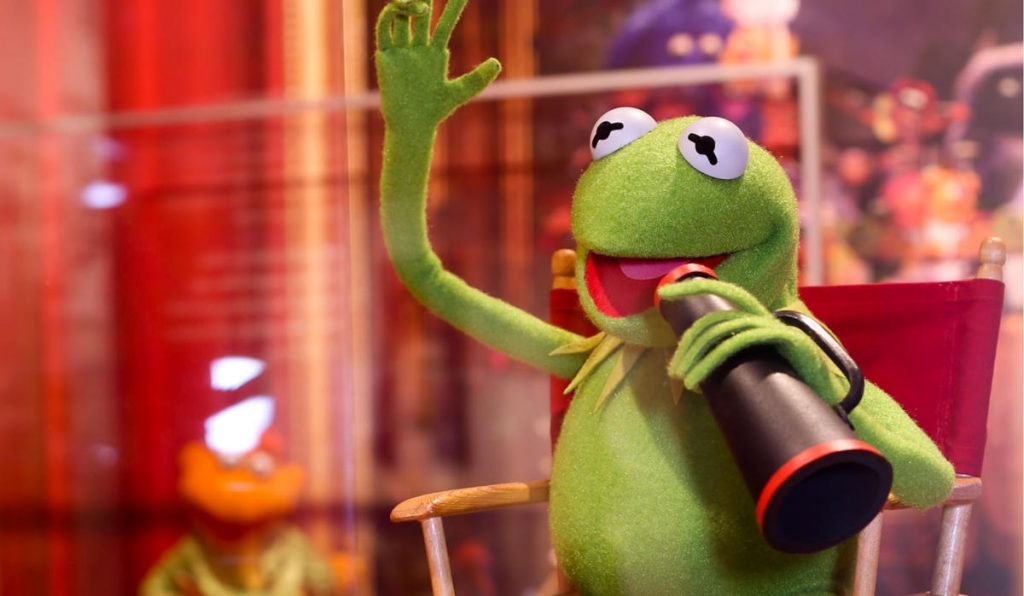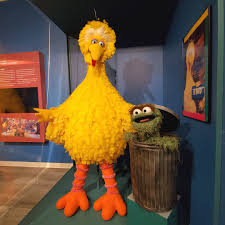
I’m sure we’re all familiar with the phrase from the adventurous Indiana Jones Movie, “That belongs in a Museum!” In this Treasures of the Museum series, MW reaches out to museums across the world and asks them Six Questions. It’s inspiring to learn more about these hidden treasures.
And if you live, or are just passing through Atlanta, Georgia, there is a magical and inspiring place you must take time to visit! The Center for Puppetry Arts is home to over 5000 puppets and other unique treasures. Who remembers watching Sesame Street and The Muppet Show? Relive the fun by exploring the Worlds of Puppetry Museum! What Treasures can be found in the Museum? What are the interesting stories behind some of the most incredible items? What are some things to look for when you visit?
Let’s find out in the following Six Questions with Yanique of The Center for Puppetry Arts! (Thank you!) Enjoy!

- 1Q) When did you start working with The Center for Puppetry Arts? Can you share some of its historical background?
I was a new graduate in June 2018 when I began working at the Center for Puppetry Arts. Just a bit of background on myself, before working at the Center for Puppetry Arts I was a graduate student earning a master’s degree in History and certificate in Museum Studies at the University of West Georgia. My time in the program allowed me to interact with many museum collections while learning how to properly preserve artifacts. In addition, during my final years in the graduate program I earned the opportunity to work for the National Park Service at the Martin Luther King, Jr. National Historical Park in Atlanta, GA as a CESU Museum Technician. It was my time at the park where I put my skills to the test and expanded them.
I can definitely say the work experience as well as the hands-on educational skills prepared me for my position at the Center for Puppetry Arts. Throughout the graduate program, I would always hear how tough it would be to get a job after graduation, but to my surprise I obtained the position of Collections Manager a month after graduation. Before working at the Center for Puppetry Arts, I had not heard of or visited the institution. However, as I began working, I learned that is a unique and exciting place. The Center for Puppetry Arts, founded by Vincent Anthony, opened to the public on September 23, 1978, when Kermit the Frog and his creator Jim Henson cut the ceremonial ribbon. It was the first puppetry center in the United States and today it is the largest American non-profit solely dedicated to the art of puppet theater. Since its establishment, the Center has worked to serve the diverse populations of Atlanta, the state of Georgia, and the country at large. The Center reaches the community through its focus on core programming: performance, museum and education.

- 2Q) What do you enjoy most about working at the museum?
The thing I really enjoy the most about working at the Center for Puppetry Arts is that I am the person who has the most contact with the museum collection. Being the Collections Manager allows me to work with our entire collection; therefore, giving me the opportunity to learn about different types of puppetry and go back in time with some amazing nostalgic puppets. With my role, I ensure the safety and the long-term preservation and care of the puppets in the Center’s museum collection. I feel that this is a huge role because I ensure that the puppets in our collection survive for generations to come as resources to educate the public about the art form of puppetry.
- 3Q) Do you feel there is one exhibit or artifact that the museum is most known for? Can you share some interesting facts about it?
The Center for Puppetry Arts’ Worlds of Puppetry Museum has a great deal of artifacts that patrons visit to see, so it is hard to choose only one. However, I feel that Big Bird is an artifact that everyone loves to see when they visit. The character Big Bird has been on television since 1969, so he is known amongst several generations and is a familiar face to all. It is not only knowing him from television or childhood, it is seeing him up close and personal that draws people in and brings back so many memories.
The Big Bird currently on exhibition at the Center for Puppetry Arts is not the only Big Bird of course, because you can still see him on Sesame Street today. Our Big Bird is different from some of the other artifacts in our collection because it is a display puppet generously donated by the family of Jim Henson, which was never performed on television. Nevertheless, it is still the same six-year-old 8 feet 2 inches tall yellow bird who resides on Sesame Street.

- 4Q) Is there some often forgotten item that shouldn’t be missed when visiting?
I would not say these are artifacts that are often forgotten, but they do have quite an interesting story. These are the Porgy and Bess marionettes from the New England Marionette Opera (NEMO), which was founded by Edward (Ted) Leach and opened May 1992 in Peterborough, New Hampshire. This institution was the United States’ only opera company performed entirely with marionettes. They became the first marionette theater to stage a full production of Porgy and Bess performed solely with puppets in 1994, after acquiring permission from the estate of the opera’s composer, George Gershwin. The Gershwin rights holders granted permission through the year 2000.
NEMO was set to reprise its production of Porgy and Bess in 1999, but sadly, it would never happen. On New Year’s Day 1999, fire raged through NEMO’s theater. Luckily, no one was hurt in the blaze; however, over two hundred handcrafted marionettes, from nine operas, burned. Months after the fire, many of the Porgy and Bess marionettes were recovered from the remains of the theater; they had been almost completely preserved in the frozen January weather. Due to the financial constraints of rebuilding, NEMO officially closed on December 31, 1999. Today, these NEMO puppets have been treated by a trained conservator and live on here at the Center for Puppetry Arts.
- 5Q) What do you feel is the most valuable ‘treasure’ of the museum? It might not be a monetary value, but of a historical value or even sentimental?
In my opinion, the most valuable ‘treasure’ in the Worlds of Puppetry Museum are the small female and male clay pre-Columbian figures from a Huasteca tribe in Mexico. These figures are the oldest objects in the Center for Puppetry Arts’ museum collection and are presumed to have taken part in shamanistic performances during religious rituals. We are very fortunate to have these artifacts because of their historical and educational value. In addition, these artifacts hold a sentimental value because they were two of the many artifacts donated by Nancy Lohman Staub in 1980, who helped establish the Center for Puppetry Arts first permanent museum.
- 6Q) Is there any advice you would have for those wanting to visit? Are there best times of the day, or days of the week to come? How long should visitors allow on their schedules to explore the fascinating exhibits? Anything else?
Due to COVID-19, the Center for Puppetry Arts’ Worlds of Puppetry Museum and Dean DuBose Smith Special Exhibit Gallery where you can explore Jim Henson’s The Dark Crystal: World of Myth and Magic are the only things opened on site. The time a patron takes in the museum varies from person to person, but I always encourage them to take their time, take all the pictures they want (without flash of course), and just have fun! We are currently opened Wednesday through Saturday 10 a.m. to 5 p.m. EST and Sunday 12 p.m. to 5 p.m. EST.
We are requiring all patrons to wear masks and using timed ticketing to ensure low density and social distancing inside the Museum for the safety of our visitors and staff. Though the museum exhibitions are only opened on site, we are doing digital programming that includes digital puppet shows, on-demand video of live performances, Create-A-Puppet Workshop™ puppet kits, and more. All you must do is check out our website at www.puppet.org. We hope to see you soon!


